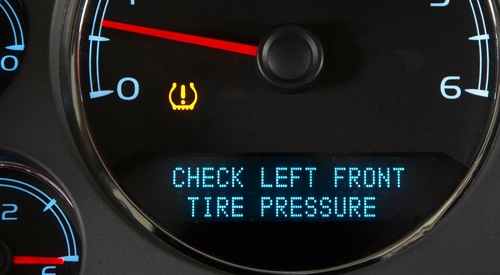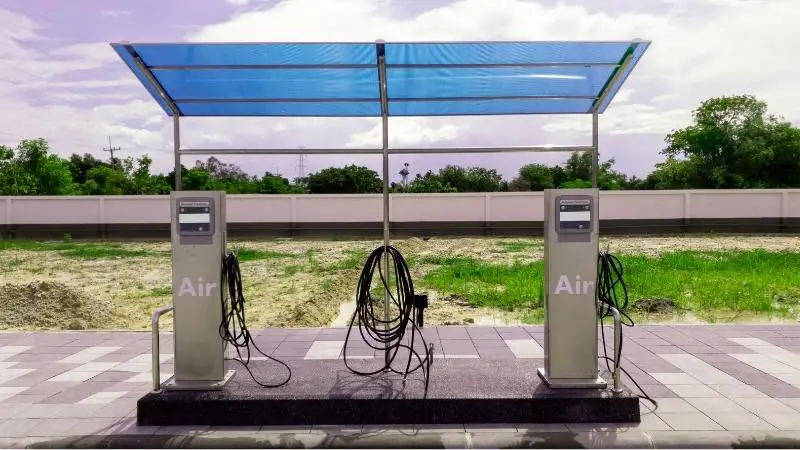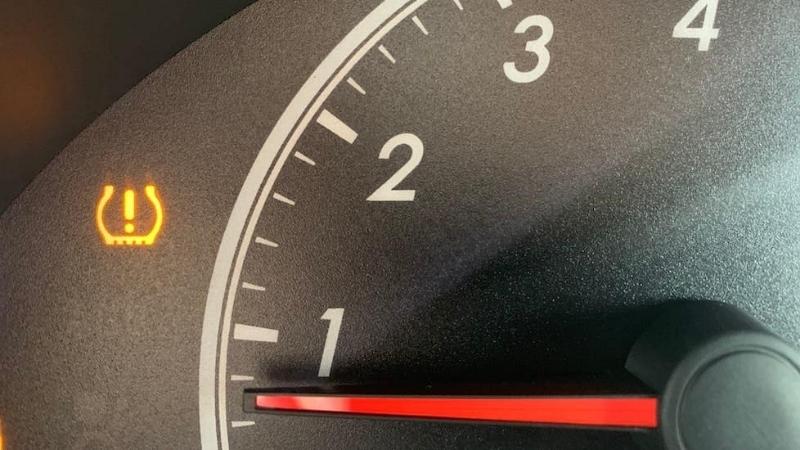It could happen at any time. You’re driving your car, and everything seems fine; nothing is out of the ordinary. Then from out of nowhere, your tire pressure light comes on.
You’re surprised because you just checked your tires a couple of hours ago, so you know the pounds per square inch (psi) is where it should be. Yet, the tire pressure light comes on.
You don’t know what’s happening, but in your mind, it’s just as bad as the check engine light coming on. Now, what do you do?
Whatever you do, don’t ignore your tire pressure light.
There are a few reasons why the tire pressure light stays on even after adding air to your tire: a possible tire leak, a problem with a sensor on your TPMS, or your TPMS button needs to be reset.
What is the Tire Pressure Monitor System (TPMS) and How Does it Work?
Most modern vehicles has a Tire Pressure Monitor System (TPMS). The TPMS measures the air pressure in each of your tires. When air pressure in any one of your tires drops below a certain level, a sensor will signal and the air pressure light will turn on.
You will know this light as a yellow-colored horseshoe that will pop up on your vehicle display behind the steering wheel.

With a fully-functioning TPMS, you will be warned every time one or all of your tires need air pressure. Once the air is applied at its manufacturer-recommended level, the tire pressure light goes off.
Why is Air Pressure so Important?
Tires are prone to lose air, even when they’re sitting still. They can easily become over-inflated in the summer and under-inflated during the cooler months.
When your tires are not properly inflated at the manufacturer-recommended psi level, you can lose gas mileage, which cost you money. It can also cause your tires to wear quicker (which doesn’t save you money either).
Worn tires can ultimately lead to other things like losing control of your vehicle and possibly causing an accident, putting your life and the lives of others at risk.
Why Would The Tire Pressure Light Come on?
There are two reasons your tire pressure light would come on: a decrease in temperature or a tire leak.
Decrease in temperature: If your tire is losing pressure, it’s possible there was a change in temperature. When the temperature outside drops, the air gets denser and takes up less space, reducing pressure from the air in your tires.
Tire leak: This could be a warning from your TPMS that the tire may be punctured and is at risk of going flat.
What to do When my Tire Pressure Light Comes on

When your tire pressure light comes on, the last thing you want to do is ignore it. The first thing you’ll want to do is pull over at a safe location to check your tires.
If a puncture has occurred, it’s possible you could even have a flat tire. In that case, you will need roadside assistance. If there is no flat, and your tires seem capable of going further, try getting to the nearest place with an air pump or a vehicle service center to increase the air pressure.
The proper tire pressure for your vehicle can usually be found on a sticker in the driver’s side door placard or the glove compartment. If all else fails, you should also be able to find it in your owner’s manual. The maximum pressure is also shown on the tire’s sidewall so that you do not exceed that amount.
To know how much air is needed in your tires, you have to first know how much is in them. It’s recommended to invest in a tire gauge to have in the vehicle at all times.
A tire gauge will allow you to know how much air pressure is in your tires, so you can know how much more needs to be applied. It’s also a good idea to check your tire pressure at least once a month with your tire gauge to know your psi is as it should be.
What if my Tire Pressure Light Comes on Even After Filling my Tires?
So, you’ve addressed the issues with your tire pressure light coming on — you’ve checked your tires and applied additional air as needed, but the tire pressure light is still on. Now what?
There are a few reasons why the tire light stays on after adding air to your tire:
- It’s possible you have a leak you can’t see that’s slowly seeping air as you’re applying it.
- There’s a problem with a sensor on your TPMS and it needs to be fixed.
- You have a vehicle that requires you to reset your TPMS button to turn off the tire pressure light.
Solving The Issue
You will need to take your vehicle to get it serviced for either of the first two reasons why your tire pressure light would come on after filling your tires.
If your tire pressure light needs to be reset, this may be something you can do on your own, depending on the vehicle. Not all vehicles reset the same.
The best way to know how to reset your TPMS light is to refer to your owner’s manual — there may be a reset button within the vehicle. Some reset buttons can be found inside the glove compartment or near the steering wheel.
Still, some vehicles require more than a button. If you find the manual is not helpful, then you will also need to get this featured service.
Your tire pressure light should not remain on after filling your tires. If it does, attend to the issue sooner than later to avoid additional damage and unnecessary maintenance.
Some ways to do that include; rechecking the tire pressure with the gauge, resetting the TPMS, or getting your vehicle serviced. Usually, the longer an issue goes unattended, the more it will cost you later.
Hi, my name is Niklas, the head content creator & CEO of Whirling Wheelz. I am very interested in vehicles of all kinds, mainly cars. I have a car mechanics degree from high school and a big hobby of mine is to follow the WRC (World Rally Championship) both online and through travel.


